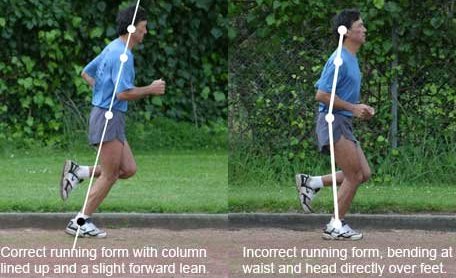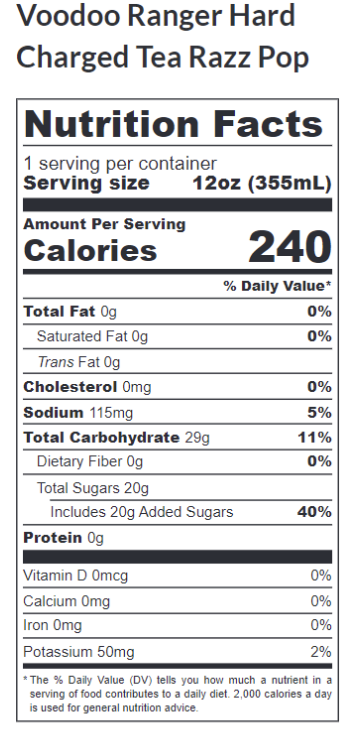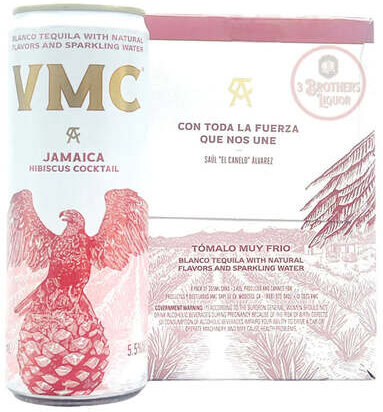
Upper back pain during running often stems from poor posture or weak muscles. It can disrupt your exercise routine and signal the need for improved form.
Upper back pain while running is a common problem that many athletes and fitness enthusiasts face, potentially hindering performance and enjoyment of the sport. This discomfort can be caused by a variety of factors, including muscle strain, improper running technique, or a lack of core strength leading to an undue burden on the upper back muscles.
Ensuring that your running posture is correct and strengthening the back and core muscles are essential steps in preventing and addressing upper back pain. Consistency in practice, gradual progression in intensity, and attention to body mechanics can help manage and prevent the pain. Proper footwear and running surfaces also play a critical role in supporting your spine and back muscles, reducing the likelihood of pain. Consulting a physical therapist or a personal trainer with a focus on sports injuries can provide targeted advice and exercises tailored to your specific needs.

Credit: www.gramercypaincenter.com
The Onset Of Upper Back Pain In Runners
Upper back pain strikes when you least expect it, especially during a run. Runners often report a nagging discomfort or sharp pain between the shoulder blades. This pain can turn a peaceful jog into a challenge. Understanding the triggers and preventative measures is key to maintaining back health and persistence in your running routine.
Common Triggers For Upper Back Pain
Several factors contribute to that unwelcome ache in your upper back. Knowing the most common ones helps identify actions to reduce the pain. They include:
- Poor running form, which leads to excess strain
- Weak muscles in the back and core
- Overuse injuries from repetitive motion
- Tightness in the chest and shoulders
- Inadequate stretching before and after runs
The Role Of Posture In Running-related Discomfort
The way you hold your body when you run can invite upper back pain. An slouched posture adds stress to your spine and muscles. Run tall, with shoulders relaxed, to avoid discomfort. A strong core and back supports proper posture. Include exercises that focus on these areas in your training plan.
Remember, running isn’t just about the legs; your upper body plays a crucial part too. Listen to your body, maintain a good form, and keep your back muscles strong to enjoy pain-free runs.
Anatomy Involved With Running
Are you familiar with what happens inside your body as you run? Your upper back plays a surprising role. This part of your body keeps you upright and balanced. Each stride affects your back. Understanding the anatomy helps pinpoint how upper back pain develops.
Muscles At Play In The Upper Back
Several key muscles power your run. The trapezius, rhomboids, and latissimus dorsi work hard to stabilize your shoulders. Your deltoids and rotator cuff muscles also join in. They let your arms swing freely.
- Trapezius: This kite-shaped muscle stretches from your neck to mid-back.
- Rhomboids: They connect your shoulder blades to the spine.
- Latissimus Dorsi: Known as the lats, they are large muscles in your back.
- Deltoids: These shoulder muscles give power to arm movement.
- Rotator Cuff Muscles: A group of muscles and tendons that secure the shoulder.
How Running Impacts The Spine
While you run, your spine keeps everything aligned. But, each footfall sends shock waves up your body. The spine absorbs this impact. A strong core helps keep the spine safe. Without it, the spinal discs and vertebrae feel extra stress. This could lead to pain in the upper back.
| Spine Component | Role |
|---|---|
| Spinal Discs | Act as cushions between vertebrae |
| Vertebrae | Support body weight and enable movement |
Assessing Your Running Form
Assessing Your Running Form can make a huge difference in preventing upper back pain. An incorrect posture while running can strain your upper back muscles. It’s critical to focus on correct running form to reduce discomfort and improve performance. Good form helps you run more efficiently and reduces the stress on your body.
Ideal Posture For Runners
Perfecting the ideal posture for running is essential. Maintain a straight line from your head to your ankles. Your head should be up, your back straight, and your shoulders level. Keep your arms at a 90-degree angle and your hands relaxed. This keeps your upper body aligned and helps prevent pain.
- Head up and looking forward
- Back straight, not arched or slumped
- Shoulders relaxed and level
- Arms swinging naturally with a 90-degree bend
- Hands loose, not clenched
Common Form Mistakes And Their Fixes
Runners often make mistakes that lead to back pain. Being aware of these can help you make adjustments. Here are a few common form mistakes with easy fixes:
| Mistake | Fix |
|---|---|
| Slouching with a rounded back | Imagine a string pulling your head up straight |
| Uneven shoulders | Shrug a few times, then let them settle evenly |
| Over-swinging arms across your body | Keep arms pumping forward, not across your torso |
| Tight fists | Pretend you are holding a fragile object in each hand |
Running with proper form can prevent upper back pain. Make small changes for a smoother run. Keep practicing regularly to see improvement.
Impact Of Footwear On Back Health
Upper back pain while running can turn a healthy habit into a discomforting chore. The right footwear plays a crucial role in maintaining back health. It’s not just about the cushioning or the style; it’s about how shoes support your entire body from the ground up. Now, let’s explore how choosing the correct running shoes and understanding foot support can alleviate back pain.
Choosing The Right Running Shoes
Selecting the ideal running shoes is vital for back support. Wrong shoes may lead to undue stress on your spine. Here are key factors for the best choice:
- Arch Type: Know your arch – high, medium, or flat.
- Cushioning: Adequate cushion absorbs impact shocks.
- Size: Ensure a snug fit, avoiding tight or loose shoes.
Visit a specialty store for a professional fitting. Experts can recommend shoes based on gait analysis and arch type.
The Connection Between Foot Support And Back Pain
Proper foot support is non-negotiable for a pain-free back. Shoes affect how your foot strikes the ground.
| Foot Strike | Spinal Impact |
|---|---|
| Heel strike | Increases stress on the spine. |
| Mid-foot strike | Spreads force evenly, reducing pain. |
Good shoes provide a stable base, preventing overpronation or supination, which lead to back pain.
Pre-run Practices To Prevent Pain
Runners often focus on their legs and feet. Your upper back needs attention too. Before you hit the track, a good warm-up routine can prevent pain. Let’s explore essential practices that prepare your muscles and reduce injury risks.
Essential Warm-up Exercises
Warm-ups raise your body temperature and prepare muscles for exercise. They reduce stiffness and increase flexibility. Follow these simple exercises:
- Shoulder Rolls: Roll your shoulders slowly, ten times forward and ten times back.
- Arm Circles: Extend your arms and make small circles, gradually increasing the size.
- Thoracic Extension: Sit or stand straight. Place hands on lower back. Lean back gently until you feel a stretch.
Dynamic Stretching Routines For The Upper Back
Dynamic stretches are movements where you stretch as you move. They loosen up the back. Try these dynamic routines:
- Cat-Cow Stretch: On hands and knees, arch your back up and down.
- Twist Stretch: Stand up, arms out. Twist your torso left, then right.
- Shoulder Shrugs: Shrug your shoulders up towards your ears and release.

Credit: firstlinephysio.co.uk
Recovery Techniques For Runners
Upper back pain during running can turn a vigor-boosting activity into a challenge. Effective recovery techniques are crucial for runners looking to maintain a pain-free experience and optimize performance. Let’s explore some tried and true methods to help your upper back recover after a run.
Post-run Cooling Down
Cooling down is an essential step in preventing upper back pain after running. A structured cool-down routine helps reduce muscle tension and promote recovery. Follow these simple steps:
- Gradually reduce your pace to a walk to lower your heart rate.
- Practice deep breathing to relax your muscles.
- Finish with stretching exercises focused on your upper back, shoulders, and neck.
Recovery Tools And Methods
To further alleviate upper back pain, various recovery tools and methods come in handy. They contribute to muscle relaxation and promote healing. Here’s a table listing a few favorites:
| Tool | Method | Benefit |
|---|---|---|
| Foam Roller | Self-myofascial release | Relieves muscle tightness |
| Massage Ball | Targeted pressure | Addresses specific pain points |
| Resistance Bands | Stretching assistance | Improves flexibility |
Incorporate these tools into your post-run routine to support recovery. Roll out tense muscles with a foam roller or massage ball. Use resistance bands to aid in stretching those hard-to-reach muscles in your upper back. This proactive approach helps prevent pain so you can stay on track with your running goals.
Strength Training To Support The Upper Back
Upper back pain during running is a common issue for athletes.
Your back muscles need support to handle the rigors of running.
Strength training can fortify your upper back,
ensuring a more comfortable and injury-free running experience.
Below, find targeted exercises and balance strategies for a strong, stable upper back.
Exercises Targeting Upper Back Strength
A well-rounded routine includes exercises that focus on the upper back.
It creates endurance and power for better posture.
Let’s explore some effective exercises to build upper back strength.
- Dumbbell Rows: This move hits your rhomboids and lats.
- Lat Pulldowns: A gym favorite for a wider, stronger back.
- Face Pulls: Perfect for hitting those rear deltoids.
- Reverse Flyes: They open up your chest while strengthening the back.
- Thoracic Extensions: They focus on the mid-upper spine region.
Balancing Core And Back Muscle Development
Strengthening your core and back muscles together is vital.
It keeps your body aligned and reduces injury risk.
Aim for a balance with these exercises.
| Core Exercise | Back Exercise |
|---|---|
| Planks | Supermans |
| Bicycle Crunches | Dumbbell Shrugs |
| Dead Bugs | Bent Over Rows |
Remember, consistency is key for lasting strength.
Include these exercises in your weekly routine.
Your back will thank you on your next run!

Credit: m.youtube.com
When To Seek Professional Help
Upper back pain during running can dampen your spirit and hinder performance. It’s essential to listen to your body. Recognize when discomfort transforms into a signal for professional help.
Signs That Your Back Pain Needs Medical Attention
Some discomfort might be expected after a rigorous run. But certain symptoms should never be ignored:
- Pain persists even after rest and self-care measures.
- Pain that radiates down limbs or up the neck.
- A sudden increase in intensity of pain.
- Numbness, tingling, or weakness in your arms or legs.
- Pain accompanied by fever, unexpected weight loss, or bowel/bladder issues.
Types Of Healthcare Professionals For Running-related Injuries
Several healthcare professionals specialize in running-related injuries:
| Professional | Role |
|---|---|
| Sports Medicine Doctors | Dedicated to the medical care of athletes, including diagnostic and recovery strategies. |
| Physical Therapists | Focus on movement and mechanical disorders, fostering rehabilitation and prevention. |
| Chiropractors | Specialize in the spine, offering adjustments and other treatments to alleviate pain. |
| Osteopaths | Provide holistic treatments, often integrating body, mind, and lifestyle factors into care. |
| Orthopedic Surgeons | Experts in the musculoskeletal system, they handle severe injuries and surgical cases. |
Integrating Cross-training To Alleviate Pain
Do you feel a twinge in your upper back during a run? Often, runners focus solely on their sport for exercise. Yet, cross-training can be a game-changer for reducing pain. It diversifies your routine, protecting your upper body from strain. Let’s dive into how integrating different workouts can keep you on track, minus the discomfort.
Alternative Exercises To Support Running
Running is a fantastic workout, but variety is key for a strong back. Here’s a look at exercises that can enhance your running experience:
- Swimming: This no-impact sport gives your joints a break while strengthening your back muscles.
- Yoga: It stretches and strengthens, boosting flexibility in muscles that support your spine.
- Strength Training: Building back muscle supports your spine, reducing pressure while you run.
Include these in your routine to help balance your fitness and keep upper back pain at bay.
How Cross-training Benefits Your Upper Back
Tackling different sports can transform your running and your health. Let’s see how cross-training positively impacts your upper back:
| Activity | Benefit |
|---|---|
| Rowing | Builds back strength, enhancing posture during runs. |
| Pilates | Improves core stability, key to upper back health. |
| Cycling | Reduces impact on spine while boosting leg power. |
By adding these activities, you give muscles often neglected by running the attention they need. This can lead to fewer injuries and better overall fitness. Embrace cross-training and feel the difference it makes to your upper back and your running stride!
Adapting Your Lifestyle For Back Health
Upper back pain can hinder the enjoyment and performance of running. To deal with this, lifestyle choices play a crucial part. Small yet consistent changes can create a big impact on back health. Let’s look at how rest and nutrition contribute to minimizing back pain.
Importance Of Proper Rest And Sleep
Quality sleep restores the body and aids in muscle recovery. It’s essential for runners to get enough rest to allow their upper back muscles to heal after a strenuous run. A lack of sleep may lead to poor posture and increased injury risk. Follow these tips for restful recovery:
- Stick to a sleep schedule: Go to bed and wake up at the same time every day.
- Optimize your sleep environment: Ensure your mattress and pillows support your spine comfortably.
- Unwind before bed: Practice relaxation techniques like reading or deep breathing to promote better sleep.
Nutritional Considerations For Tissue Health
Proper nutrition fuels muscle repair and overall back health. Anti-inflammatory foods can help reduce upper back pain associated with running. Focus on nutrient-rich foods that support tissue health:
| Food Category | Benefits for Back Health |
|---|---|
| Proteins (chicken, fish, tofu) | Build and repair muscle tissue |
| Omega-3 Fatty Acids (salmon, flaxseeds) | Reduce inflammation |
| Calcium and Vitamin D (dairy, leafy greens) | Strengthen bones |
| Antioxidants (berries, nuts) | Support tissue recovery |
Incorporate these foods into your diet to complement your running routine and support your back’s health:
- Stay hydrated: Drink plenty of water before, during, and after runs.
- Eat balanced meals: Combine proteins, carbs, and healthy fats for optimal nourishment.
- Consider supplements: Speak to a professional if additional vitamins or minerals are necessary.
Frequently Asked Questions Of Upper Back Pain During Running
Why Does My Upper Back Hurt While Running?
Upper back pain during running can stem from poor posture, muscle strain, or tension. Ensuring proper form and strengthening back muscles may alleviate discomfort.
How Can I Run Without Upper Back Pain?
To run without upper back pain, ensure proper running posture with shoulders relaxed and down. Strengthen your core and upper back muscles regularly. Choose supportive footwear and run on even surfaces. Stretch before and after your runs to maintain flexibility.
Consult with a professional for personalized advice.
Why Does My Upper Back Hurt When I Exercise?
Upper back pain during exercise can result from poor posture, muscle strain, or improper lifting techniques. Overuse or engaging in unfamiliar activities might also cause discomfort. Always ensure proper form and gradual intensity increases to prevent pain. Consult a doctor if pain persists.
Why Does My Upper Back Hurt When I Run Breathing?
Upper back pain during running can be due to poor posture, improper breathing techniques, or muscle strain. Ensure proper running form and build core strength to help alleviate the discomfort.
Conclusion
Running should be a liberating activity, not a source of discomfort. By addressing upper back pain with proper posture, equipment, and stretching, you can enhance your running experience. Remember to listen to your body and seek professional advice if pain persists.
Keep striving for pain-free runs and enjoy the journey toward healthier living.






